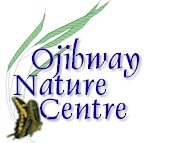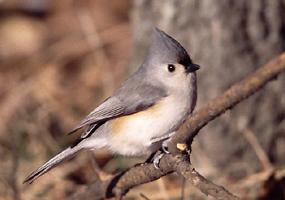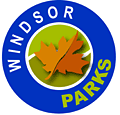
LINKS
Main Menu
Site Map & Links
link to Tourism web site
BIRDING
Birders Guide to Ojibway Prairie
Birding Guide to Pt. Pelee, Windsor and Essex County
(810)-477-1360 SE Michigan/SW Ontario RBA, Detroit Audubon
(519)-322-2371 Migration update, Point Pelee National Park
Latest Sightings Ojibway Nature Centre
Point Pelee Birding Area
Point Pelee National Park. Birds have made Point Pelee National Park world famous. Each spring and fall, thousands of birds pass through the area, giving Pelee an impressive checklist which presently stands at 386 species. The spring migration begins with the arrival in late January or early February of the Horned Larks. They are followed, in turn, by ducks, blackbirds, geese and Tundra Swans who arrive as the ice begins to thaw. Point Pelee is best known for its great diversity of songbirds. In particular, the spectacular movement of wood warblers through the Park is so outstanding that it is often dubbed "The Warbler Capital of North America". Of the 55 species of American wood warblers, 42 have been observed at Point Pelee and 36 occur annually.
The peak of spring migration occurs in mid-May before most trees have leafed out and coincides with our annual Festival of Birds. The fall migration of most species is less hurried and this allows even the most casual observer more time to study species than during spring's frenzied northward movement. Such species as Golden Eagle, Peregrine Falcon, Merlin, Northern Saw-whet Owl and Blackpoll Warbler can be found with regularity in the fall. The Park's "Migration Line", (519) 322-2371, is up-dated daily during the spring and autumn seasons.
The Onion Fields - located north of Point Pelee are often good for shorebirds, especially Golden and Black-bellied Plovers, Red Knots and Ruddy Turnstones. In the early fall Upland and Buff-breasted Sandpipers are regular visitors. Horned Larks, Savannah Sparrows and House Finches are common along the road that parallels the north boundary of Pelee marsh. Hillman Marsh Conservation AreaThis is one of the premiere areas for viewing marsh life in Essex County. The 850 acre marsh is located on County Road #20 at the extreme eastern shore of Essex County on Lake Erie. An information centre and five km. of walking trails are located at the northwest corner of the marsh. Bald Eagles are residents and rarities such as Yellow-headed Blackbird, Willet, Marbled Godwit, Eurasian Wigeon, Glossy Ibis and Western Kingbird are often reported here. Many species of herons, ducks, gulls, shorebirds, swallows, egrets, terns, rails and songbirds are easily found along the roads bordering the marsh. King Rails have nested in the area. Sandhill Cranes have been noted in migration. Fields near the parking lot often have Eastern Meadowlarks and Bobolinks in May. Wooded patches near the perimeter roads can sometimes have pockets of passerines which may include rare warblers and vireos. Dead standing trees support large numbers of Double-crested Cormorants. This site can provide excellent birding both spring and fall.
A 87 acre shorebird wetland was created in 2003 and a large viewing shelter was added in 2013. It is managed specifically to provide shorebird and waterfowl habitat during the spring migration. In the spring of 2005, thirty species of shorebirds were recorded here.
Kopegaron Woods Conservation Area
Located just north of Hillman Marsh, this conservation area provides 47 acres of excellent woodland birding during migration and a great spot for spring wildflowers. Dykes were upgraded in 2010 for improved control of water levels.
Wheatley Harbour
The harbour area is an excellent location to look for rare gulls among the large number of Herring and Ring-billed Gulls that loaf on the beach and piers.
Two Creeks Conservation Area
This wooded conservation area is located on the north side of Wheatley. It has a trail network and extensive conifer plantations.
Holiday Beach Conservation Area. This park is located on the North shore of Lake Erie on County Road #50, approximately six miles southeast of Amherstburg and 20 miles south of Windsor. Holiday Beach is one of the best places in North America to observe large concentrations of migrating raptors between mid September and late November. The 35-foot Hawk Tower, overlooking the 2,000 acre Big Creek Marsh, provides an excellent view of raptors and other dirunal migrants as they move along the lakeshore. All of the eastern accipiters, falcons and buteos occur in good numbers. Bald Eagles, Double-crested Cormorants and Great Egrets nest locally and Golden Eagles are regularly seen in migration. Among the species of raptors which have been recorded at this site, seasonal totals for Broad-winged Hawks always number in the tens of thousands. Daily totals up to 96,000 hawks, 600 hummingbirds, 250,000 Blue Jays, 4,500 American Goldfinches, 10,000 Cedar Waxwings and 30,000 Americans Crows have been observed in recent years. An official counter from the Holiday Beach Migration Observatory is present at the site each day from September 1 to November 30. For more information about the Observatory, call (519) 776-5209 (Essex Region Conservation Authority) or (519) 736-3772 (Holiday Beach).
Jack Miner Bird Sanctuary. This world-famous refuge for Canada Geese is located three miles north of Kingsville on Division Road (County Road #29). The 300 acre Sanctuary contains a museum and nature centre which is open year-round from 8am to 5pm, daily. Here one can view the spring and fall migratory flight of Canada Geese. During the spring and summer months, the large open fields provide opportunities to view open meadow birds such as Savannah Sparrows, Bobolinks and Eastern Meadowlarks.
Pelee Island
Pelee Island. Canada's southernmost community is home to an excellent diversity of breeding species and has similar birding life to Point Pelee. The island's Heritage Centre also provides a sightings book. (519) 724-2291.
Fish Point Nature Reserve - Has been described as a miniature Point Pelee in form and vegetation, providing an outstanding wide variety of migrants.
Stone Road Alvar - This open prairie-like parkland and nature reserve plays host to southern breeding birds; including Yellow-breasted Chat and Orchard Oriole. Windsor
 Ojibway Prairie Complex. A total of 247 species have been recorded in the Ojibway Prairie Complex on the southwest corner of Windsor. The Ojibway Nature Centre is located just north of the Windsor Raceway and is accessed on Matchette Road north of Sprucewood. This is one of the largest protected tallgrass prairie and oak savanna habitats in Canada. Over 800 acres of natural parkland attracts numerous species of birds, including Tufted Titmouse, Red-bellied Woodpecker, Indigo Bunting and many migrant warblers. A newly constructed nature centre in 2011 provides a sightings book, checklists and maintains a variety of feeders. Ojibway Nature Centre, (519) 966-5852. The birding guide and checklist are also available on-line. (519) 966-5852.
Detroit River - In winter large numbers of waterfowl concentrate in the open waters of the Detroit River. Sand Point Beach, Peche Island and St. Rose Beach Park are good spots to observe flocks of Canvasbacks, Redheads and other diving ducks. Peregrine Falcons and Bald Eagles are present year round. Peregrine Falcons have been nesting under the Ambassador Bridge in recent years and are easily observed from University Ave.
Lake St. Clair shoreline
Ojibway Prairie Complex. A total of 247 species have been recorded in the Ojibway Prairie Complex on the southwest corner of Windsor. The Ojibway Nature Centre is located just north of the Windsor Raceway and is accessed on Matchette Road north of Sprucewood. This is one of the largest protected tallgrass prairie and oak savanna habitats in Canada. Over 800 acres of natural parkland attracts numerous species of birds, including Tufted Titmouse, Red-bellied Woodpecker, Indigo Bunting and many migrant warblers. A newly constructed nature centre in 2011 provides a sightings book, checklists and maintains a variety of feeders. Ojibway Nature Centre, (519) 966-5852. The birding guide and checklist are also available on-line. (519) 966-5852.
Detroit River - In winter large numbers of waterfowl concentrate in the open waters of the Detroit River. Sand Point Beach, Peche Island and St. Rose Beach Park are good spots to observe flocks of Canvasbacks, Redheads and other diving ducks. Peregrine Falcons and Bald Eagles are present year round. Peregrine Falcons have been nesting under the Ambassador Bridge in recent years and are easily observed from University Ave.
Lake St. Clair shorelineRuscom Shores Conservation Area. A significant marsh situated on Lake St. Clair between Belle River and Stoney Point attracts shore/marsh birds and song birds during passage and breeding season. Tremblay Beach Conservation Area. This area is located on Lake St. Clair, east of Stoney Point. Past rarities include Swainson's Hawk, Tricolored Heron, Glossy Ibis and Purple Gallinule but this marsh is now overgrown with phragmities. It is one of the few public access points to the Lake St. Clair shoreline.
Directly south of the Tremblay Beach Conservation Area is the village of Comber, located on Highway #77. The Big-O Conservation Area adjacent to the sewage lagoons has recorded migrants such as Parula, Prothonotary, Cerulean and Hooded Warblers, Summer Tanager and Henslow's Sparrow.
Lighthouse Cove Area. Lighthouse Cove is situated at the extreme northeast corner of Essex County on Lake St. Clair. During mid-March, thousands of Tundra Swans stop to feed in the area on their northern migratory flight. St. Clair National Wildlife Area - is located in Kent County east of Lighthouse Cove on the Shores of Lake St. Clair at County Road #37. Herons, egrets, birds of prey, shorebirds and songbirds all pass through the area. Immense flocks of Tundra Swans can observed in mid March and to a lesser extent in mid November. This is the best location to find Least Bitterns and Yellow-headed Blackbirds in the nesting season. Canadian Wildlife Service, Environment Canada (519) 354-1418. Rainy Day Hot SpotOjibway Nature Centre. - Birders can enjoy watching centre's feeders from the comfort of the lounge or from an outdoor covered deck.
